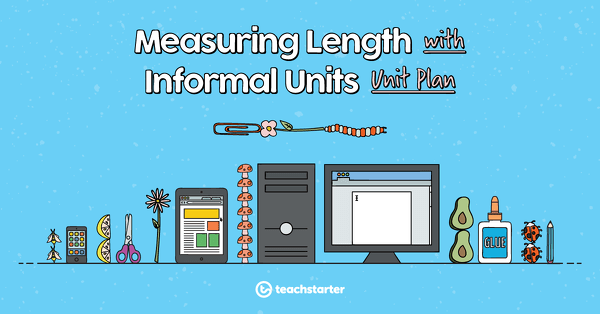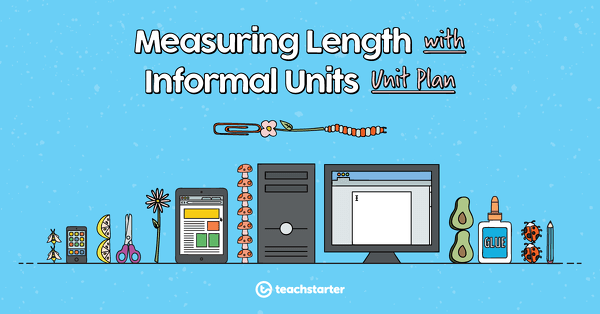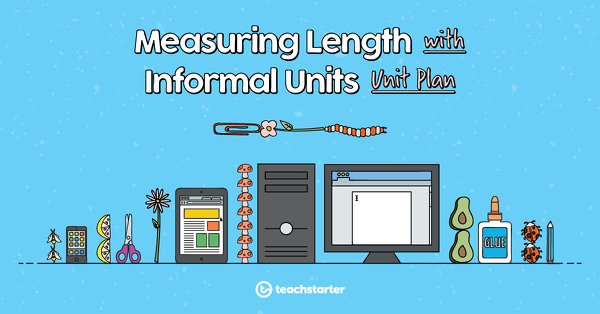Victorian Curriculum
VC2M1M02
measure the length of shapes and objects using informal units, recognising that units need to be uniform and used end-to-end
- using 2 different units (for example, icy pole sticks and pencils) to measure the length of an object (for example, a desk), and explaining why the number of units used may be different
- comparing the length of 2 objects, such as a desk and a bookshelf, by laying multiple copies of a unit and counting to say which is longer and how much longer; and explaining why they should not have gaps or overlaps between the units, as this will change the length of the unit
- measuring the distance between 2 locations using footsteps, comparing the results and explaining why there may be different results, for example, referring to the different lengths of footsteps as using different units
- measuring and comparing the length of objects using blocks; for example, comparing the height of 2 toys by stacking blocks one on top of the other and counting how many it takes to reach the height of each object to decide which is taller
Show more
3 of 35
teaching resources for those 'aha' moments
- Plus Plan

Measuring, Comparing and Ordering Height
A 60 minute lesson in which students will measure, compare and order height using informal units.
- Plus Plan

Measuring Length with Dinosaur Footprints
A 60 minute lesson in which students will measure and compare lengths of objects using informal units.
- Plus Plan

Assessment - Measuring Length with Informal Units
A 30 minute assessment in which students will demonstrate their knowledge and understanding of length.